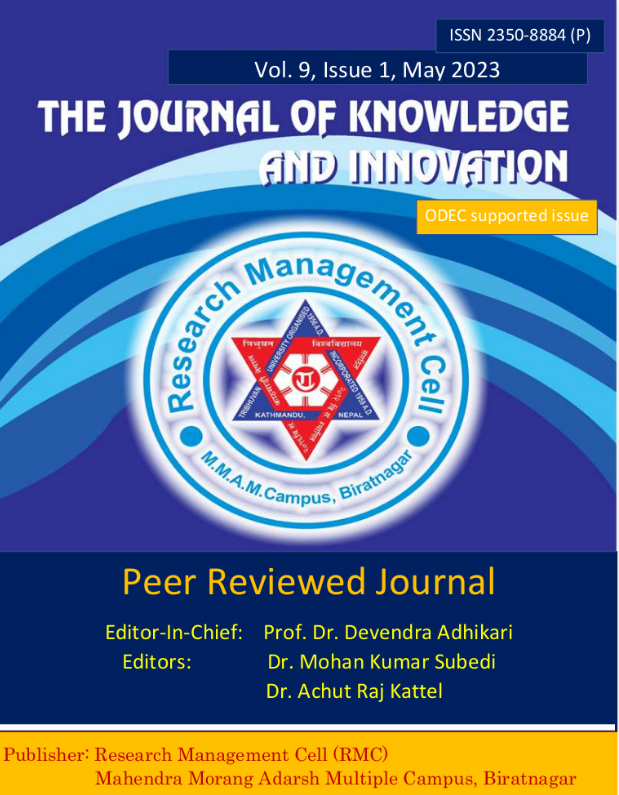Factors associated with Childhood Anthropometric Measurements in Nepal: A Provincial-Level Analysis Based on NDHS Data 2016
DOI:
https://doi.org/10.3126/jki.v9i1.53074Keywords:
Anthropometry, Wasting, Stunting, Underweight, Factors associatedAbstract
The study assesses the prevalence of and factors affecting the anthropometric measurements i.e. stunting-WAZ, wasting-WHZ and underweight-WAZ each below -2 SD from the median of the reference population, among children below 5 years of age group in newly structured seven Provinces of Nepal by different background characteristics using Nepal Demographic and Health Survey (NDHS) Data, 2016. Anthropometric indicators are far worse in Madhesh and Karnali provinces than the national average. The highest share of stunted children is in Karnali Province whose size at birth is very small (70.0%) against the national average of 36 percent. Children in the poorest quintile and born from illiterate mothers of Madhesh Province and Karnali Province have highly suffered from stunting. Data shows that children born to illiterate mothers are highly wasted in Madhesh Province (23.8%). Underweight increased with an increase in the age of the children; increases with birth order in all Provinces. Except for Gandaki Province, underweight is more common in rural areas than in urban areas. The prevalence of underweight children is the highest in the poorest quintile of Madhesh Province i. e. 50 percent as compared to the national average of 27 percent. High birth order has significantly contributed to worsening childhood nutrition. The statistical test infers that childhood stunting and underweight are in aggregate strongly related to all variables except sex while wasting is strongly associated with only children’s age and their mother’s education. The author suggests applying provincial policies and programs based on the findings to tackle their poor anthropometric indicators.
Downloads
Downloads
Published
How to Cite
Issue
Section
License
Copyright (c) 2023 Research Management Cell (RMC), Mahendra Morang Adarsh Multiple Campus

This work is licensed under a Creative Commons Attribution-ShareAlike 4.0 International License.
This license allows reusers to distribute, remix, adapt, and build upon the material in any medium or format, so long as attribution is given to the creator. The license allows for commercial use.




